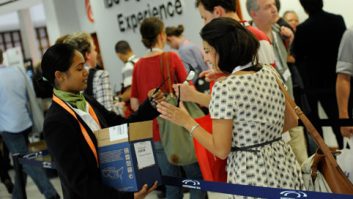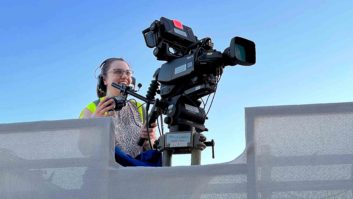
The evolution of cabling and connectors always has knock-on effects that need to be addressed, explains Chas Luchford, sales & marketing director, Canford Audio
At Canford, our broadcast customers range from equipment end-users, studio technicians, studio system integrators and OB truck builders. Celebrating our fortieth birthday in 2016, we have certainly seen change throughout our long existence – the difference now is the speed of change.
With the increasing pace of the move from specialist broadcast cables and connectors to universal standard Category cables (Cat6 and Cat6A) and fibre, the product ranges we carry to support this technology are changing fast (we could never cope with this quickly enough if we still produced the Canford Big Blue Book!).
But these changes always have knock-on effects. Finding an RJ45 connector large enough to fit onto Cat6A is not a trivial example, but exactly the sort of ‘problem solving’ that is behind much of our product sourcing. While the bulk of cable is installed, deployable Category cables are now required to support location production.
Canford was the first to introduce a truly deployable Cat5E cable, that laid obligingly flat on the ground like a mic cable. Cat6 deployable just had to follow. HDMI doesn’t go long distances on copper, so we’ve partnered with an innovative manufacturer which does fibre HDMI, offering up to 100 metres. And Senko now has DIY fibre termination kits suitable for location work – another evolutionary product.
Canford’s range has always been a mix of in-house designed and manufactured products, alongside more specialist third-party product lines. Even with more than 400 different mains distribution units, we still haven’t met all the facility combinations that system designers require – that’s market diversity.
Some are ultra-basic products where sophistication isn’t applicable, at the other end of the scale, we now have a family of IP-addressable mains distribution units that will message when something isn’t quite right with one of the connected pieces of kit, and which can be fully controlled from an iPhone.
Whatever the technology, connection panels and housings are always needed. Fibre connection panels have been introduced recently, along with IP66 rated wall cabinets to house the ever increasing amount of equipment installed outside the studio or truck.
At the other end of the technology spectrum, in the sports broadcast sector, customers demand to get closer to the action. Canford has introduced Canadian radiomic manufacturer Q5X to the UK, with its feature product of ultra-miniature, body-worn radio microphones for rugby players during live games, which allow viewers to get ‘up close and personal’ to the players.
Although widely used in the US and Australia, their first highly successful trial in live rugby coverage by UK national broadcasters took place recently, to an enthusiastic reception by production directors and audiences.
Come and see how these tiny transmitters work on our stand at IBC.
The theatre and studio sectors are also seeing dramatic changes with moves to digital and wireless communications. The ‘GreenGo’ digital communication system operates on IP networks without needing a central control matrix, so bringing flexibility of operation at a much lower price point than most other digital systems.







